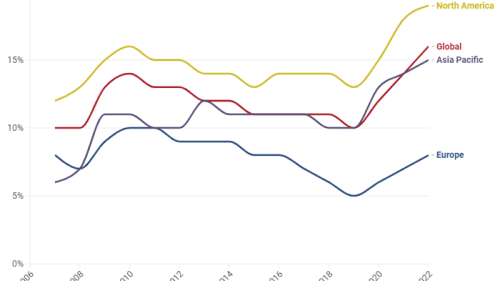European property constitutes a sound investment over the medium to long term versus other alternative asset classes. The returns may not be high and the prospect of rising bond yields could tip the balance out of its favor, but real estate still holds its own against the likes of commodities (which are exposed to a correction in pricing) and private equity (where large buyouts have become unattractive), according to insurance broker Aon Hewitt.
“The outlook for property—particularly for longer-term investors—looks good, in both absolute and relative terms. One of the driving forces is attractive valuations, which even when stress-tested against moderate adverse economic outcomes still look reasonably solid,” says Tapan Datta, a global asset allocation specialist within the group.Price gains have slowed, but valuations are attractive for longer-term investors, even allowing for a weak rental outlook. In a presentation given at a January Investment Property Forum seminar in London, Datta estimated base case U.K. property returns of 8.5 percent per annum over ten years, based on weighted yield and real rental growth, minus costs and inflation. This scenario allows for some real rental falls in 2011 and 2012, ensued by a plateau thereafter.
Jon Zehner, ULI member and senior director at AREA Property Partners, agrees: “European real estate is an attractive investment for many investors in the current low-interest-rate environment as it can provide a healthy, predictable cash return and, depending upon the asset and its location, an opportunity for capital appreciation.”
Historically considered a safe haven given its tangible qualities, property is seen as a hybrid between equities and fixed income. It can also provide a hedge against inflation. Although it has been more closely correlated with other asset classes during past periods of market stress, another advantage it offers is diversification on a long-term basis.
In general, European real estate markets are relatively transparent as well as liquid, helping to attract investors in global markets that remain volatile and somewhat unpredictable. Says Zehner: “While no one would suggest that it is appropriate for 100 percent of one’s portfolio to be invested in European real estate, or that 100 percent of one’s portfolio should be invested in real estate of any type, there is a place for European real estate in a broadly diversified portfolio.”
And it would seem a resurgence of investor demand is affirming the case for real estate. “With a fundamental performance recovery well underway in most dominant global real estate markets, we expect global direct investment into commercial real estate to surge up by 20 to 25 percent to $380 billion in 2011, which follows the 50 percent growth we experienced in 2010 over 2009 levels,” explains Colin Dyer, chief executive officer of global real estate services firm Jones Lang LaSalle.
Fourth-quarter 2010 global investment volumes already topped the $100 billion mark for the first time since the onset of the global financial crisis in 2007, demonstrating momentum for increased investment trades in the sector, he adds.
Against this backdrop, property has recaptured its place as a preferred institutional investment category. For many institutional investors—who are typically underweight to property and who are moving away from equities into alternative asset classes in order to lower the risk of their portfolios and smooth out returns—real estate is once again being valued as an asset class with better-than-average income potential.
“Along with the aging population in many parts of the world, governments and companies will need to generate more cash to pay beneficiaries and, in turn, are very likely to increasingly tap commercial real estate as an asset class due to its income-producing characteristics,” Dyer notes.
However, general concerns about economic growth and the integrity of the European Union and single currency pose a risk to the credibility of property as an investment, although these are not simply real estate risks. Interest rate rises also could have an impact on the attractiveness of European real estate, due to rising borrowing costs, although the likely scope of interest rate increases will be modest given the fragility of economic conditions in many parts of Europe, suspects Zehner. The possibility of rising gilt yields (U.K. government bonds) could also produce an adverse effect by making property look less attractive in comparison.
Lastly, as the majority of liquidity has been focused on core assets in prime European cities, there is a risk of prices running ahead of underlying values. Nonetheless, “intelligently acquired and professionally managed European real estate is a solid investment in this environment,” insists Zehner.





